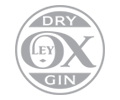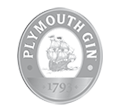 Nowadays most bottles of high quality gin, the kind Gintime is interested in, will carry the wording ‘London Dry Gin’ on the label. There are some exceptions, of which more later. Why London and why Dry?
Nowadays most bottles of high quality gin, the kind Gintime is interested in, will carry the wording ‘London Dry Gin’ on the label. There are some exceptions, of which more later. Why London and why Dry?
For the answers to those questions we have to travel back in time to London in the 1770s. Then London was the centre of the gin distilling industry with literally hundreds of distilleries many situated close to the river in east London. At this time London had the biggest and busiest port in the world and all along the docks and quays of the Thames precious cargoes of spices and exotic fruits such as oranges and lemons were landed. There was also a surplus of sugar from British colonies in the Caribbean and stocks of grain brought here for export from the surrounding countryside. No wonder then that the enterprising merchants of London should have discovered gin distilling as a natural way to make use of the plenty surrounding them.
The gin made in London had not yet parted company in terms of flavour with its antecedent, Dutch jenever. Indeed the upper classes who drank imported Dutch jenever called it by a variety of names that reflected its Dutch heritage – geneva, Hollands, Schiedam. The word ‘gin’ was something of an insult, a left over reflection of the mostly poor quality of the spirit that the poor drank in the days of the great Gin Craze. This was rotgut made from worst grain, which was distilled, to make low wine, then diluted and flavoured to disguise its terrible taste. Here’s a recipe from the 1740s from the firm of Beaufoy, James and Co and it doesn’t even mention juniper.
- Oil of vitriol (sulphuric acid)
- Oil of almonds
- Oil of turpentine
- Spirits of wine (the base spirit)
- Lump sugar
- Lime water
- Rose water
- Alum
- Salt of Tartar
By the end of the eighteenth century the effects of 50 years of increasing taxation and regulation had made themselves felt. Gin was no longer cheap, no longer the opium of the masses and many of the small scale distillers and the back street boys had been driven out of business. Control of the distilling trade had encouraged responsible firms to become involved and now there were large distilleries in London who had begun to focus on quality. They described themselves as ‘rectifiers’ and redistilled the base spirit which they bought from equally reputable firms to their own recipes using natural flavours. They sold their products as Old Tom Gin, a heavily sweetened spirit that still strongly resembled jenever. Of them Booths and Boords were the largest producers and Gordons and Nicholson’s were already prominent. Scottish grain distilleries now began to play a major role in English distilling. Legislation of 1823 had transformed Scottish distilling and licensed production of malt and grain spirit increased greatly. Much of this soon found its way south of the Border for rectification into gin.
The invention of continuous distillation first patented in 1830 by Aeneas Coffey, a Dublin Excise Officer, meant that a consistent pure grain spirit at a predetermined strength could now be made cheaply. Gin distillers no longer had to mask the flavours of inferior spirit with sugar and strong spices and could turn their attention to a new kind of gin. It was called “dry gin” because it was clear and unsweetened and it was flavoured with more subtle aromatic botanicals like coriander, cassia, angelica and orris root. Because most of the distillers making this type of gin were based in London they bottled their products as “London Dry Gin” and the name stuck.
Whilst many distillers continued to make Old Tom style gin until well into the 20th century gradually the London Dry style came to define gin as we know it. Unlike Plymouth Gin, which can only be made in Plymouth, London Dry Gin does not have to be made in London and nowadays very little is. Apart from Beefeater, most of the great names of English distilling have moved out to locations more suited to the logistics of big business although boutique brands The London Gin and Whitley Neill are still made in London. But nowadays around 70% of UK London Dry gin is produced in Scotland. However the legacy of the London distillers remains in that the words ‘London Dry’ are still synonymous the world over with ‘quality gin’.




